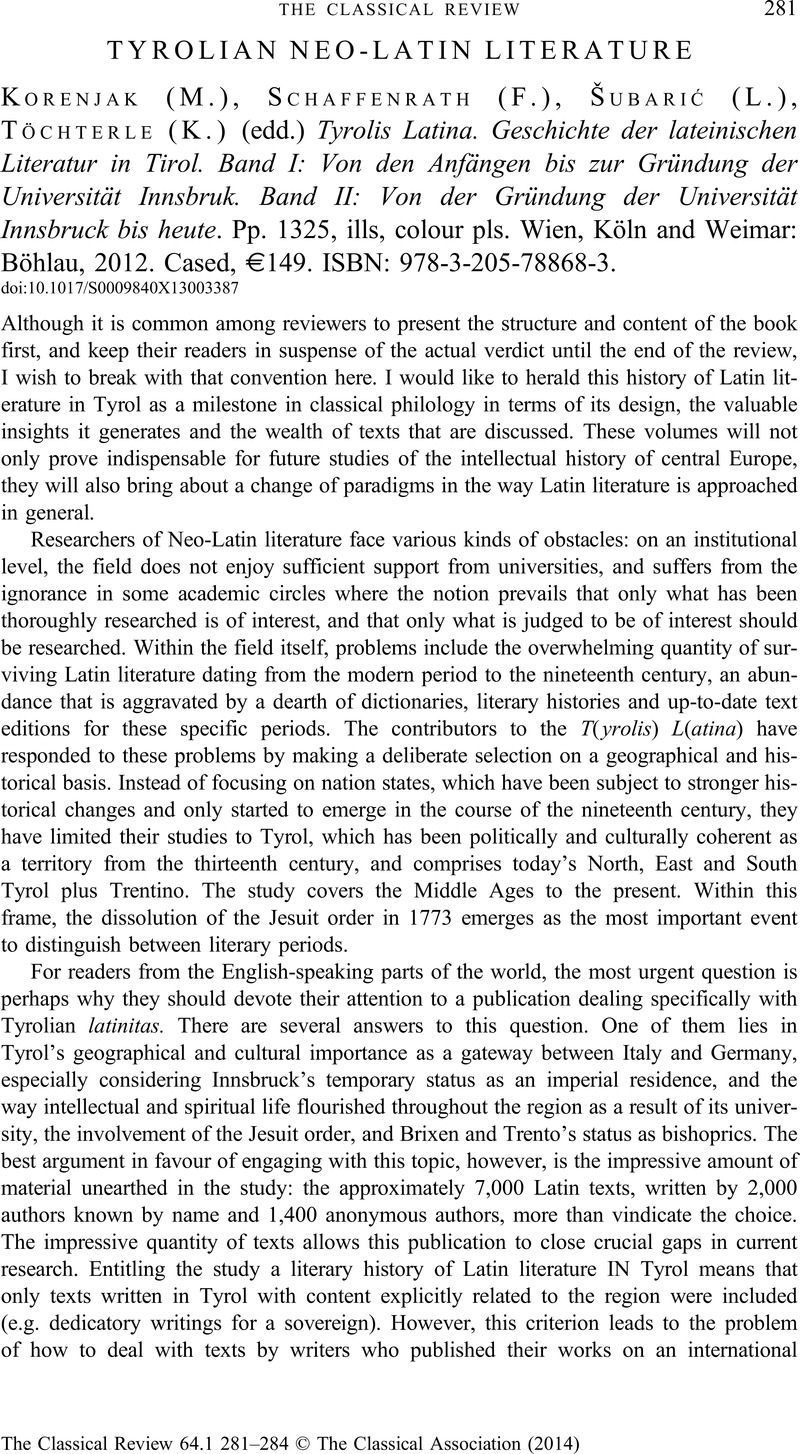No CrossRef data available.
Article contents
TYROLIAN NEO-LATIN LITERATURE - (M.) Korenjak, (F.) Schaffenrath, (L.) Šubarić, (K.) Töchterle (edd.) Tyrolis Latina. Geschichte der lateinischen Literatur in Tirol. Band I: Von den Anfängen bis zur Gründung der Universität Innsbruk. Band II: Von der Gründung der Universität Innsbruck bis heute. Pp. 1325, ills, colour pls. Wien, Köln and Weimar: Böhlau, 2012. Cased, €149. ISBN: 978-3-205-78868-3.
Review products
Published online by Cambridge University Press: 20 March 2014
Abstract

- Type
- Reviews
- Information
- Copyright
- Copyright © The Classical Association 2014
Footnotes
Translated by Katharina Epstein
References
1 One of the most important Neo-Latin poets, the Jesuit priest Jakob Balde, only worked as a teacher and writer in Innsbruck from 1628–1630. Should his comedy Iocus serius theatralis (cf. TL 1, pp. 453–7), performed in Innsbruck in 1629, be considered as part of Tyrolian literature, should it be placed within the context of the Jesuit drama of southern Germany, or should the play be seen as part of an exceptional poet's legacy?
2 In 1744, Giuseppe Pruner, a clergyman from Trento, reworked Sannazaro's De partu Virginis in an epic poem with the same title, offering a good example of how well Neo-Latin literature lent itself to reception in its more immediate literary environment.




